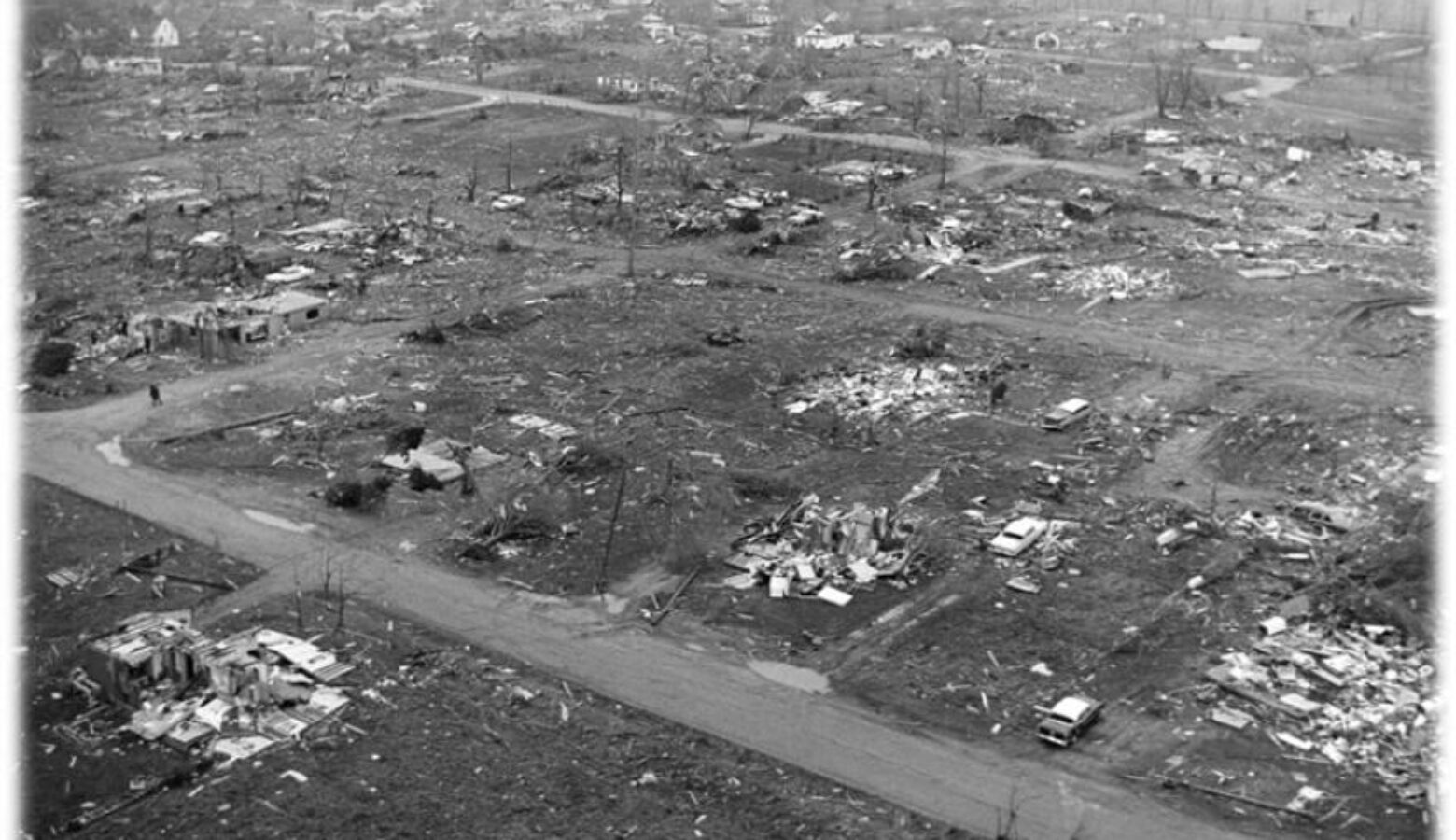It’s been 60 years since the Palm Sunday Tornado Outbreak, one of the deadliest and most destructive tornado events in U.S. history.
On April 11, 1965, 55 tornadoes swept across the Midwest, leaving a path of devastation. Indiana was among the hardest-hit states, with the town of Dunlap suffering catastrophic damage. For Debbie Watters, who was 6 years old at the time, the memory remains vivid.
“Cole Street and 45, um, that’s where we lived at the time that it happened,” Watters said.
Her home was obliterated by one of the largest tornadoes of the outbreak.
“There was nothing left of the house,” she said. “It was just so obliterated in the wind, I guess. And it, and it was gone in seconds.”
Watters, her mother, and her older brother Stevie managed to reach the basement just before the tornado struck. Despite their efforts, Stevie was killed by flying debris. Her mother was critically injured but survived. Watters escaped with minor injuries.
Her father, Chuck Forsythe, a firefighter, was assisting with rescue efforts at the nearby Midway Trailer Park when the tornado hit their home.
Some survivors described the tornado that hit Dunlap as an F4 or even an F5 on the Fujita scale.
“Anyone who survived that tornado, it’s a miracle,” Watters said.
The family was later reunited at the local hospital. Her older brother, Mike Forsythe, had been attending a Palm Sunday church service when the storm struck and was unharmed.
The trauma from that day has lingered for decades. Tornado sirens still trigger panic for Watters.
“When I hear a tornado siren, I can’t really even explain that feeling,” she said. “But I mean, instant fear, instant fear.”
Unlike today, 1965 offered little to no warning of the approaching storms. Watters believes that although tornado warning technology has improved, many people still fail to take alerts seriously.
“We have such great technology,” she said. “You can get warnings on the TV, your telephone, everywhere you turn, there’s the information — if you’re just listening. But my problem is there’s still so many people that don’t listen.”
Watters and her family established a memorial at the site of their former home on Cole Street in Dunlap to honor those who died and to help survivors heal.
“Really, the biggest reason that I made it, other than the people who died, was for my brother who survived, because he, to this day, lives with survivor’s guilt,” she said. “The memorial was made for him with the hopes that he would go there, and he would have some peace and be able to put closure to it.”
Watters said she has since learned that many other survivors also struggle with lasting emotional scars. Her brother Mike visits the memorial every time he is in town.
Watters hopes the site continues to offer peace, remembrance and a renewed commitment to tornado safety.


